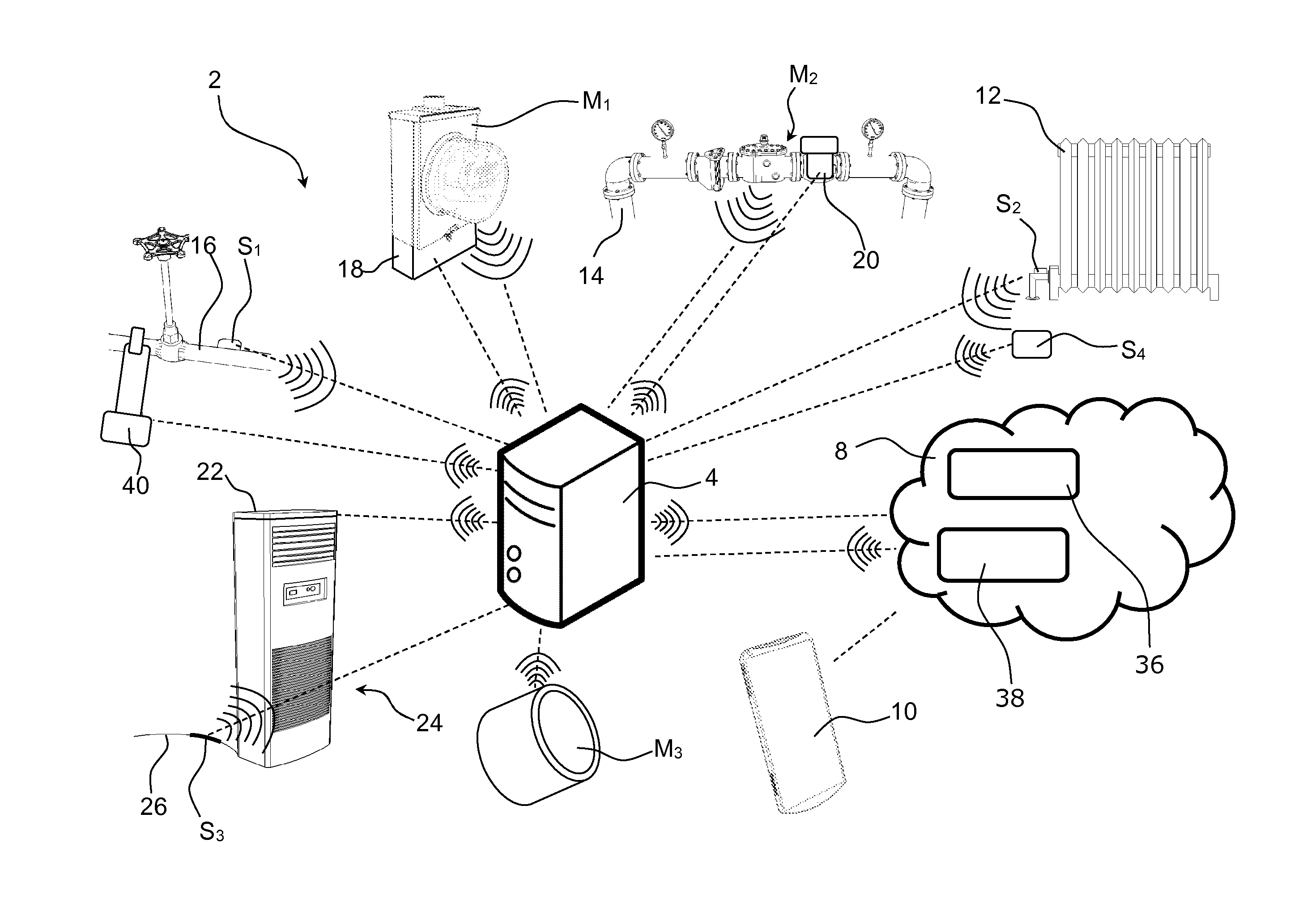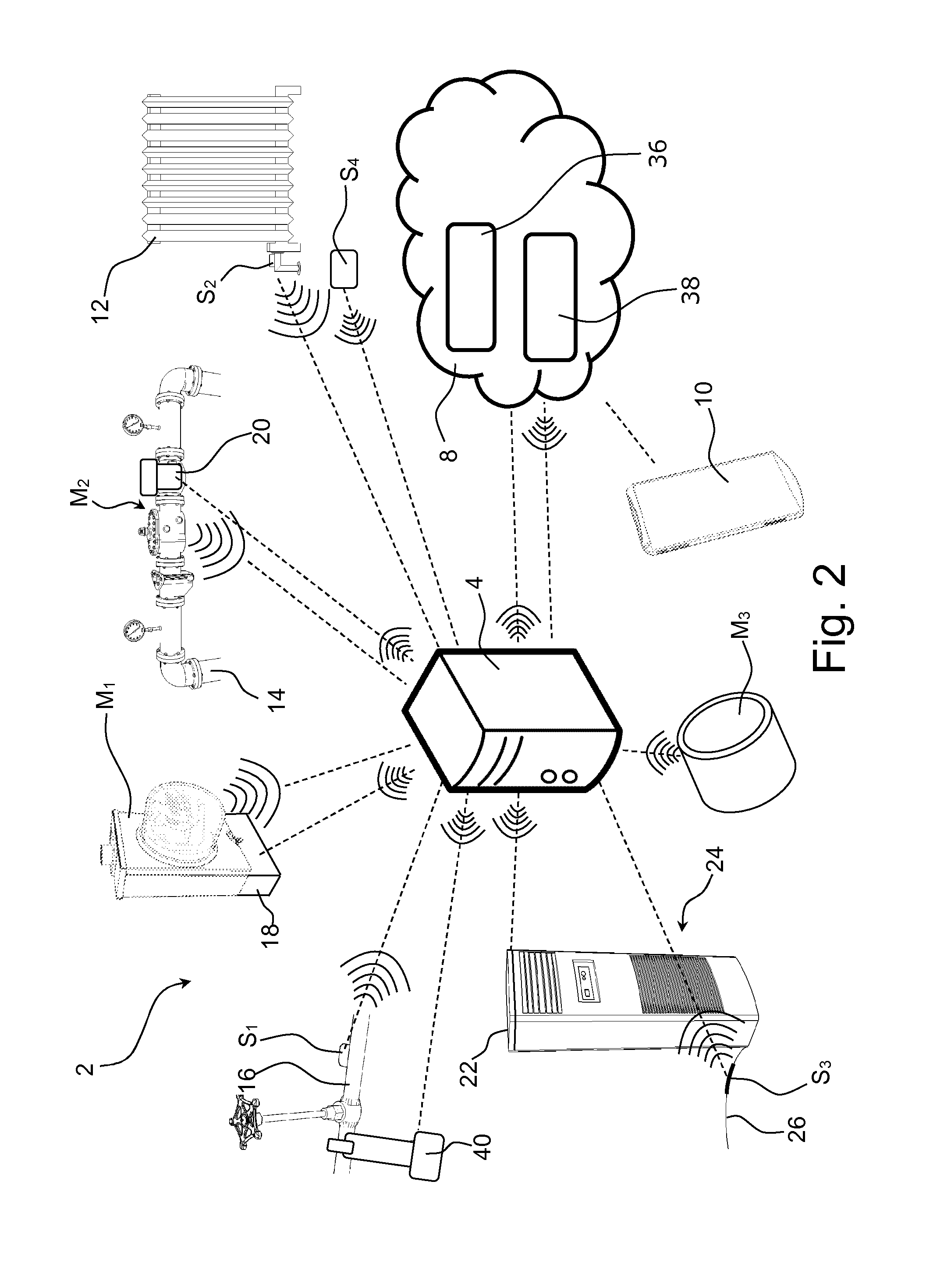Monitoring System
a monitoring system and monitoring method technology, applied in the field of systems and methods for non-intrusive monitoring, can solve problems such as waste of resources, disassembly and assembly of equipment, and overconsumption of resources
- Summary
- Abstract
- Description
- Claims
- Application Information
AI Technical Summary
Benefits of technology
Problems solved by technology
Method used
Image
Examples
Embodiment Construction
[0078]Referring now in detail to the drawings for the purpose of illustrating preferred embodiments of the present invention, a system 2 according to the present invention is illustrated in FIG. 1.
[0079]FIG. 1 is a schematic view of a system 2 according to the invention. The system 2 includes a first sensor S1 configured to monitor a first device D1 to which the first sensor S1 is attached. The system 2 also includes two further sensors (S2 and S3) which are configured to monitor a second device D2. The system 2 moreover includes two further sensors (S4 and S5) which are configured to monitor a third device D3. The sensors S1, S2, S3, S4, S5 are configured to communicate wirelessly with a router 4.
[0080]The system 2 includes meters (M1 and M2) that are configured to communicate with the router 4 that is configured to communicate wirelessly with a cloud service 8. The router 4 is communicating wirelessly with a user interface 10 represented by a smartphone 10. The router 4 is also co...
PUM
 Login to View More
Login to View More Abstract
Description
Claims
Application Information
 Login to View More
Login to View More - R&D
- Intellectual Property
- Life Sciences
- Materials
- Tech Scout
- Unparalleled Data Quality
- Higher Quality Content
- 60% Fewer Hallucinations
Browse by: Latest US Patents, China's latest patents, Technical Efficacy Thesaurus, Application Domain, Technology Topic, Popular Technical Reports.
© 2025 PatSnap. All rights reserved.Legal|Privacy policy|Modern Slavery Act Transparency Statement|Sitemap|About US| Contact US: help@patsnap.com



